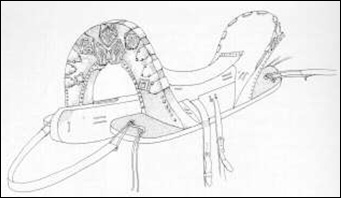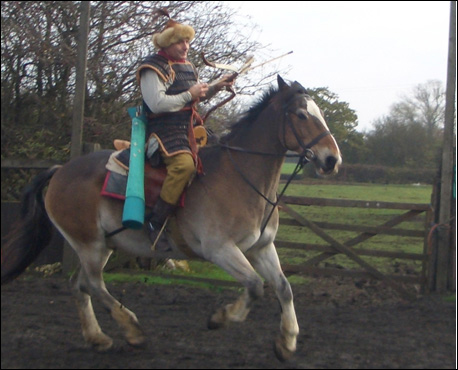Roman Cavalry
A Short Canter Through Early Historical Riding Styles Part 5
Stirrups
The rider can continue to ride with a straight leg, but with the addition of long stirrups giving greater stability. They can raise themselves in the saddle to cushion the effect of the movement of the horse whilst engaged in horse archery, important in a steppe culture. And perhaps most useful of all, the stirrup allows the horse to be easily mounted.

An Avar saddle.
Stirrups offer a "step" to help mount, and lateral stability. They also help give support to the legs over long distances, improving circulation and so reducing the effects of cold weather. To the modern rider the rising trot is used to ease the horse's back and the rider's backside, rather than the constant bouncing of the sitting trot without stirrups. The actual date that stirrups arrived in the west is open to dispute. In China paired stirrups seem to have been used in the early 4th century and were in general use by the late 5th century. In the late 6th century the Emperor Maurice mentions them in his Strategikon, probably adopted from the Avars. The earliest finds of Avar stirrups in Hungary date to the same period. Made of both wood and iron, stirrups spread across Europe during the 7th and 8th centuries.

Simple rope stirrups with wooden treads.
However the rising trot is a relatively recent invention. Federico Caprilli's invention of the "forward seat" in the 1900's revolutionised horsemanship. Previously, civilian horsemen had been using the rising trot but Caprilli introduced it and other modern notions of riding into the military. But not without some resistance as the rising trot by its very nature looking untidy and unmilitary when used by a body of cavalry. In 1876 the rising trot was permitted in the British army, but only on non-ceremonial occasions and the same rule applies today. This means that however strange it feels, the re-enactment rider should generally ride with a long leg, backside firmly in the saddle and with the horse well collected, even at the trot. Medieval illustrations show riders almost standing in the stirrups, with their backsides firmly in the seat of the saddle suspended well above the horse. Jousting saddles take this to an extreme. However things seem to have been different in the East where horsemen would shorten their stirrups and ride with a more forward seat, standing in their stirrups for horse archery. A modern approach to sitting on the horse and using stirrups.

A straight leg in long stirrups.
